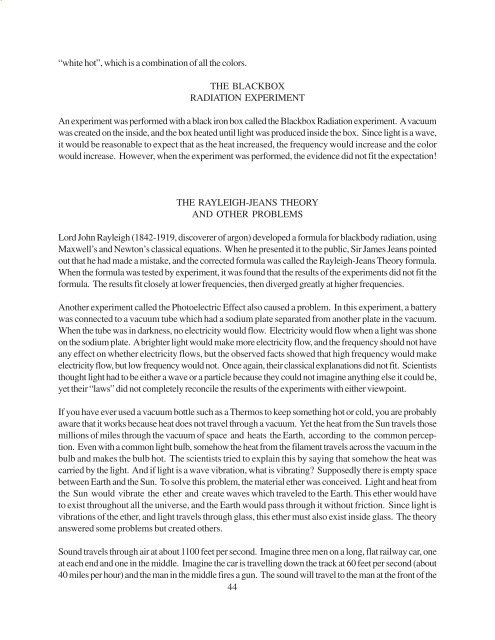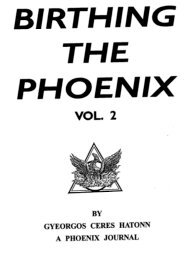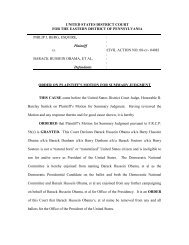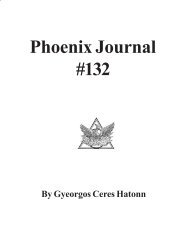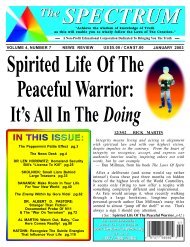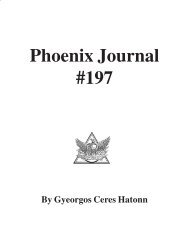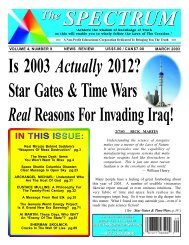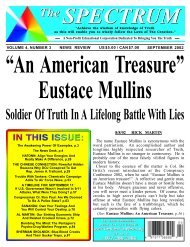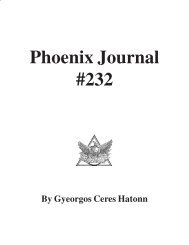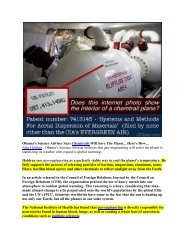Phoenix Journal 208 - Four Winds 10
Phoenix Journal 208 - Four Winds 10
Phoenix Journal 208 - Four Winds 10
Create successful ePaper yourself
Turn your PDF publications into a flip-book with our unique Google optimized e-Paper software.
“white hot”, which is a combination of all the colors.<br />
THE BLACKBOX<br />
RADIATION EXPERIMENT<br />
An experiment was performed with a black iron box called the Blackbox Radiation experiment. A vacuum<br />
was created on the inside, and the box heated until light was produced inside the box. Since light is a wave,<br />
it would be reasonable to expect that as the heat increased, the frequency would increase and the color<br />
would increase. However, when the experiment was performed, the evidence did not fit the expectation!<br />
THE RAYLEIGH-JEANS THEORY<br />
AND OTHER PROBLEMS<br />
Lord John Rayleigh (1842-1919, discoverer of argon) developed a formula for blackbody radiation, using<br />
Maxwell’s and Newton’s classical equations. When he presented it to the public, Sir James Jeans pointed<br />
out that he had made a mistake, and the corrected formula was called the Rayleigh-Jeans Theory formula.<br />
When the formula was tested by experiment, it was found that the results of the experiments did not fit the<br />
formula. The results fit closely at lower frequencies, then diverged greatly at higher frequencies.<br />
Another experiment called the Photoelectric Effect also caused a problem. In this experiment, a battery<br />
was connected to a vacuum tube which had a sodium plate separated from another plate in the vacuum.<br />
When the tube was in darkness, no electricity would flow. Electricity would flow when a light was shone<br />
on the sodium plate. A brighter light would make more electricity flow, and the frequency should not have<br />
any effect on whether electricity flows, but the observed facts showed that high frequency would make<br />
electricity flow, but low frequency would not. Once again, their classical explanations did not fit. Scientists<br />
thought light had to be either a wave or a particle because they could not imagine anything else it could be,<br />
yet their “laws” did not completely reconcile the results of the experiments with either viewpoint.<br />
If you have ever used a vacuum bottle such as a Thermos to keep something hot or cold, you are probably<br />
aware that it works because heat does not travel through a vacuum. Yet the heat from the Sun travels those<br />
millions of miles through the vacuum of space and heats the Earth, according to the common perception.<br />
Even with a common light bulb, somehow the heat from the filament travels across the vacuum in the<br />
bulb and makes the bulb hot. The scientists tried to explain this by saying that somehow the heat was<br />
carried by the light. And if light is a wave vibration, what is vibrating? Supposedly there is empty space<br />
between Earth and the Sun. To solve this problem, the material ether was conceived. Light and heat from<br />
the Sun would vibrate the ether and create waves which traveled to the Earth. This ether would have<br />
to exist throughout all the universe, and the Earth would pass through it without friction. Since light is<br />
vibrations of the ether, and light travels through glass, this ether must also exist inside glass. The theory<br />
answered some problems but created others.<br />
Sound travels through air at about 1<strong>10</strong>0 feet per second. Imagine three men on a long, flat railway car, one<br />
at each end and one in the middle. Imagine the car is travelling down the track at 60 feet per second (about<br />
40 miles per hour) and the man in the middle fires a gun. The sound will travel to the man at the front of the<br />
44


